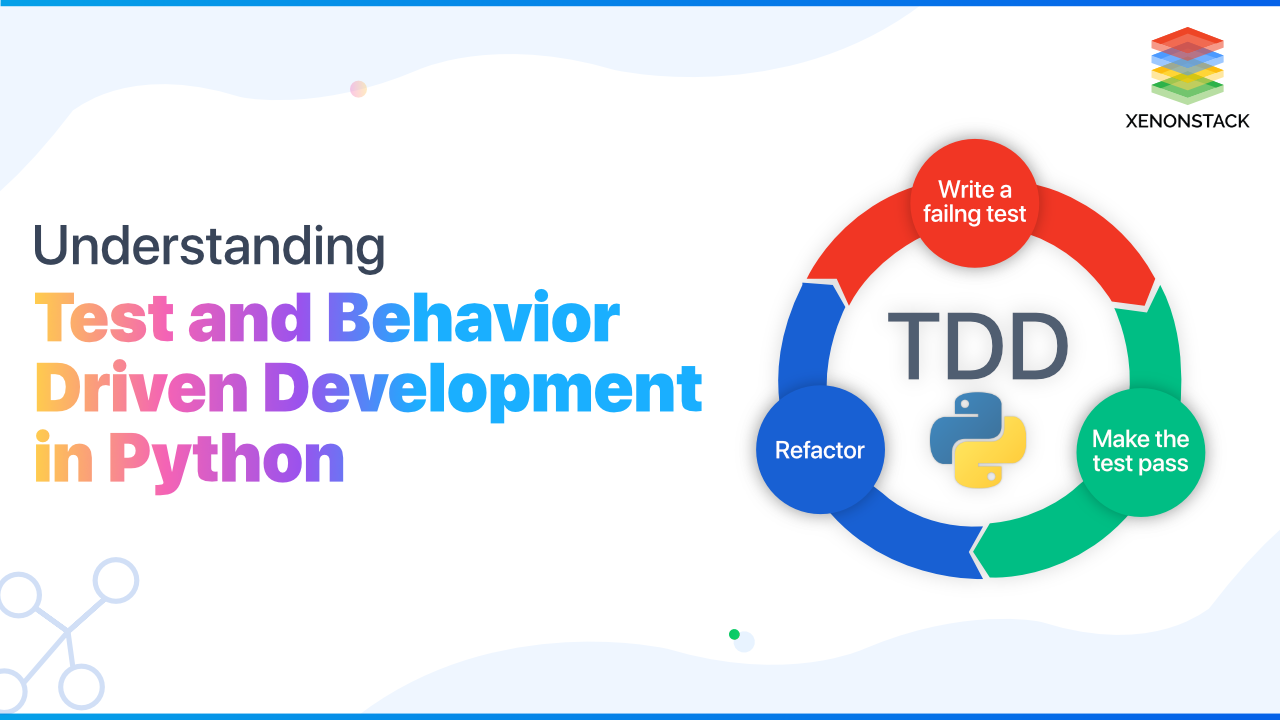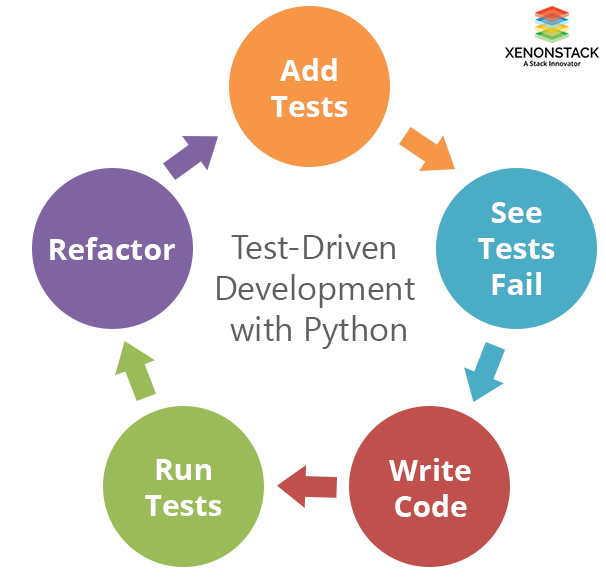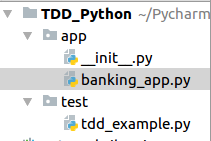
Overview of Test Driven Development (TDD)
Test Driven Development (TDD) is a great approach for software development. TDD is nothing but the development of tests before adding a feature in code. This approach is based on the principle that we should write small codes rather than writing long codes. In TDD, whenever we want to add more functionality in our codes, we first have to write a test for that. After that, we add new functionality with small code lines combined and then test it with our test. This approach helps us to reduce the risk of encountering significant problems at the production level.A key practice for extreme programming; it suggests that the code is developed or changed exclusively by the unit testing. Click to explore about, Test Driven Development (TDD) Tools
What is Test Driven Development (TDD)?
Test Driven Development is an approach in which we build a test first, then fail the test and finally refactor our code to pass the test.Test Driven Development (TDD) Approach
As the name suggests, we should first add the test before adding the functionality in our code. Now our target is to make the test pass by adding new code to our program. So we refactor our code to pass the written test. This uses the following process -- Write a failing unit test
- Make the unit test pass
- Repeat
What is the Test Driven Development Process Cycle?
 As shown in the flow
As shown in the flow
- First, add tests for the functionality.
- Next, we run our test to fail.
- Next, we write code according to the error we received.
- Then we run the tests again to see if the test fails or passes.
- Then refactor the code and follow the process again.
What are the benefits of Test Driven Development (TDD)?
Now the question arises why should one opt TDD approach. Practicing TDD brings lots of benefits. Some of the benefits are listed below -- In TDD we build test before adding any new feature to it, that means in TDD approach our entire code is covered under the test. That’s a great benefit of TDD as compared to the code which has no test coverage.
- In TDD one should have a specific target before adding new functionality. This means before adding any new functionality one should be clear about its outcome.
- In an application, one method depends on the other. When we write tests before the method that means we should have clear thoughts about the interfaces between the methods. That allows us to integrate our method with the entire application efficiently and help in making our application modular too.
- As the entire code is covered by the test that means our final application will be less buggy. This is a big advantage of the TDD approach.
Test Driven Development increase the productivity and overall development of software/program. Click to explore about, Test Driven Development for Java using JUnit
What is Acceptance Test Driven Development (ATDD)?
ATDD is short for Acceptance Test Driven Development. In this process, a user, business manager and developer, all are involved. First, they discuss what the user wants in his product; then business manager creates sprint stories for the developer. After that, the developer writes tests before starting the projects and then starts coding for their product. Every product/software is divided into small modules, so the developer codes for the very first module then test it and sees it getting failed. If the test passes and the code are working as per user requirements, it is moved to the next user story; otherwise, some changes are made in coding or program to make the test pass. This process is called Acceptance Test Driven Development.What is Behavior Driven Development (BDD)?
Behavior Driven testing is similar to Test Driven Development, in the way that in BDD also tests are written first and tested and then more code is added to it to make the test pass. The major area where these two differ is that tests in BDD are written in plain descriptive English type grammar. Tests in BDD aim at explaining the behaviour of the application and are also more user-focused. These tests use examples to clarify the user requirements in a better way.What are the features of Behavior Driven Development (BDD)?
- The major change is in the thought process which is to be shifted from analyzing in tests to analyzing in behaviour.
- Ubiquitous language is used; hence it is easy to be explained.
- BDD approach is driven by business value.
- It can be seen as an extension to TDD; it uses natural language which is easy to understand by non-technical stakeholders also.
Database testing can be performed in a web application or desktop because the database can be used in the application. Click to explore about, Database Unit Testing
What are the approaches for Behavior Driven Development (BDD)?
We believe that the role of testing and test automation TDD(Test Driven Development) is essential to the success of any BDD initiative. Testers have to write tests that validate the behaviour of the product or system being generated. The test results formed are more readable by the non-technical user as well. For Behavior Driven Development to be successful, it becomes crucial to classify and verify only those behaviours that give directly to business outcomes. Developer in the BDD environment has to identify what program to test and what not to test and to understand why the test failed. Much like Test Driven Development, BDD also recommends that tests should be written first and should describe the functionalities of the product that can be suited to the requirements.
Behavior Driven Development helps greatly when building detailed automated unit tests because it focuses on testing behaviour instead of testing implementation. The developer thus has to focus on writing test cases keeping the synopsis rather than code implementation in mind. By doing this, even when the requirements change, the developer does not have to change the test, input and output to support it. That makes unit testing automation much faster and more reliable. Though BDD has its own sets of advantages, it can sometimes fall prey to reductions.
Development teams and Tester, therefore, need to accept that while failing a test is a guarantee that the product is not ready to be delivered to the client, passing a test also does not mean that the product is ready for launch. It will be closed when development, testing and business teams will give updates and progress report on time. Since the testing efforts are moved more towards automation and cover all business features and use cases, this framework ensures a high defect detection rate due to higher test coverage, faster changes, and timely releases.
What are the benefits of Behavior Driven Development (BDD)?
It is highly suggested for teams and developers to adopt BDD because of several reasons, some of them are listed below -
- BDD provides a very accurate guidance on how to be organizing communication between all the stakeholders of a project, may it be technical or non-technical.
- BDD enables early testing in the development process, early testing means lesser bugs later.
- By using a language that is understood by all, rather than a programming language, a better visibility of the project is achieved.
- The developers feel more confident about their code and that it won’t break which ensures better predictability.
A process that enables the developers to write code and estimate the intended behavior of the application. Click to explore about, Unit Testing of ML with Test Driven
Test Driven Development (TDD) with Python
Here we exploring the Test-driven development approach with Python. Python official interpreter comes with the unit test modulePython Unit Testing
These are the main methods which we use with python unit testing|
Method |
Checks That |
|
a == b |
|
|
assertNotEqual(a, b) |
a != b |
|
assertTrue(x) |
bool(x) is True |
|
assertFalse(x) |
bool(x) is False |
|
a is b |
|
|
a is not b |
|
|
x is None |
|
|
assertIsNotNone(x) |
x is not None |
|
a in b |
|
|
assertNotIn(a, b) |
a not in b |
|
isinstance(a, b) |
|
|
not isinstance(a, b) |
Test Driven Development (TDD) in Python with Examples
We are going to work on an example problem of banking. Let's say that our banking system introduced a new facility of credit money. So we have to add this to our program. Following the TDD approach before adding this credit feature, we first write our test for this functionality.Setting Up Environment For Test Driven Development (TDD)
This is our directory structure
Writing Test For Test Driven Development (TDD)
So we write the following code for the unittest in the test/tdd_example.py
import unittest
class Tdd_Python(unittest.TestCase):
def test_banking_credit_method_returns_correct_result(self):
bank = Banking()
final_bal = bank.credit(1000)
self.assertEqual(1000, final_bal)
File "/PycharmProjects/TDD_Python/test/tdd_example.py", line 6, in test_banking_credit_method_returns_correct_result
bank = Banking()
NameError: name 'Banking'
is not defined
How to implement Test Driven Development (TDD) in Python?
So first we have to create our Banking class in the app/banking_app.py file
class Banking():
def __init__(self):
self.balance = 0
def credit(self, amount):
pass
import unittest
from app.banking_app
import Banking
class Tdd_Python(unittest.TestCase):
def test_banking_credit_method_returns_correct_result(self):
bank = Banking()
final_bal = bank.credit(1000)
self.assertEqual(1000, final_bal)
if __name__ == '__main__':
unittest.main()
AssertionError: 1000 != None
Ran 1 test in 0.002 s
FAILED(failures = 1)
class Banking():
def __init__(self):
self.balance = 0
def credit(self, amount):
self.balance += amount
return self.balance
Testing started at 5: 10 PM...
Ran 1 test in 0.001 s
OK
import unittest
from app.banking_app
import Banking
class Tdd_Python(unittest.TestCase):
def setUp(self):
self.bank = Banking()
def test_banking_credit_method_returns_correct_result(self):
final_bal = self.bank.credit(1000)
self.assertEqual(1000, final_bal)
def test_banking_credit_method_returns_error_if_args_not_numbers(self):
self.assertRaises(ValueError, self.bank.credit, 'two')
if __name__ == '__main__':
unittest.main()
Ran 2 tests in 0.002 s
FAILED(errors = 1)
class Banking():
def __init__(self):
self.balance = 0
def credit(self, amount):
amount_type = (int, float, complex)
if isinstance(amount, amount_type):
self.balance += amount
return self.balance
else :
raise ValueError
Testing started at 5: 33 PM...
Launching unittests with arguments python - m unittesttdd_example.py in /PycharmProjects/TDD_Python / test
Ran 2 tests in 0.002 s
OK
import unittest
from app.banking_app
import Banking
class Tdd_Python(unittest.TestCase):
def setUp(self):
self.bank = Banking()
def test_banking_credit_method_returns_correct_result(self):
final_bal = self.bank.credit(1000)
self.assertEqual(1000, final_bal)
def test_banking_credit_method_returns_error_if_args_not_numbers(self):
self.assertRaises(ValueError, self.bank.credit, 'two')
def test_banking_debit_method_returns_correct_result(self):
final_bal = self.bank.debit(700)
self.assertEqual(1000, final_bal)
def test_banking_debit_method_returns_error_if_args_not_numbers(self):
self.assertRaises(ValueError, self.bank.debit, 'two')
if __name__ == '__main__':
unittest.main()
AttributeError: 'Banking'
object has no attribute 'debit'
Ran 4 tests in 0.003 s
FAILED(errors = 2)
class Banking():
def __init__(self):
self.balance = 1000
def credit(self, amount):
amount_type = (int, float, complex)
if isinstance(amount, amount_type):
self.balance += amount
return self.balance
else :
raise ValueError
def debit(self, amount):
amount_type = (int, float, complex)
if isinstance(amount, amount_type):
self.balance -= amount
return self.balance
else :
raise ValueError
Testing started at 5: 44 PM...
Launching unittests with arguments python - m unittest / PycharmProjects / TDD_Python / test / tdd_example.py / PycharmProjects / TDD_Python / test
Ran 4 tests in 0.002 s
OK
Test Driven Development (TDD) Tools For Python
The best Test Driven Development for Python tools are listed below:
-
nosetest
(venv) xenon@dm08:~/PycharmProjects/TDD_Python$ nosetests test/tdd_example.py
----------------------------------------------------------------------
Ran 4 tests in 0.001s
OK
-
py.test
$ py.test test/example_unit_test.py (venv) xenon @dm08: ~/PycharmProjects/TDD_Python$ py.test test / tdd_example.py === === === === === === === === == test session starts === === === === === === === === === == platform linux--Python 3.4 .3, pytest - 3.2 .5, py - 1.5 .2, pluggy - 0.4 .0 rootdir: /home/xenon / PycharmProjects / TDD_Python, inifile: collected 4 items test / tdd_example.py.... === === === === === === === === 4 passed in 0.09 seconds === === === === === === === === ===
-
unittest
if __name__ == '__main__':
unittest.main()
-
unittest.mock
import unittest
from unittest.mock
import patch
from app.banking_app
import Banking
class TestBanking(unittest.TestCase):
@patch('app.banking_app.Banking.credit', return_value = 1700)
def test_credit(self, credit):
self.assertEqual(credit(700), 1700)
(venv) xenon @dm08: ~/PycharmProjects/TDD_Python$
py.test test / mock.py === === === === === === === === = test session starts === === === === === === === === === === =
platform linux--Python 3.4 .3, pytest - 3.2 .5, py - 1.5 .2, pluggy - 0.4 .0
rootdir: /home/xenon / PycharmProjects / TDD_Python, inifile:
collected 1 item
test / mock.py.
=== === === === === === === === == 1 passed in 0.14 seconds === === === === === === === === ===Summary
In TDD approach the main objective is to fail first and then rectify your code. So we first build test, fail the test and then refactor our code to pass the test. This approach uses the idea that first we should finalize what we require, then built the target test for it, and then start to achieve that target.- Explore here about Test Driven Development with React JS
- Click to know about System Testing Types, Best Practices and Tools


